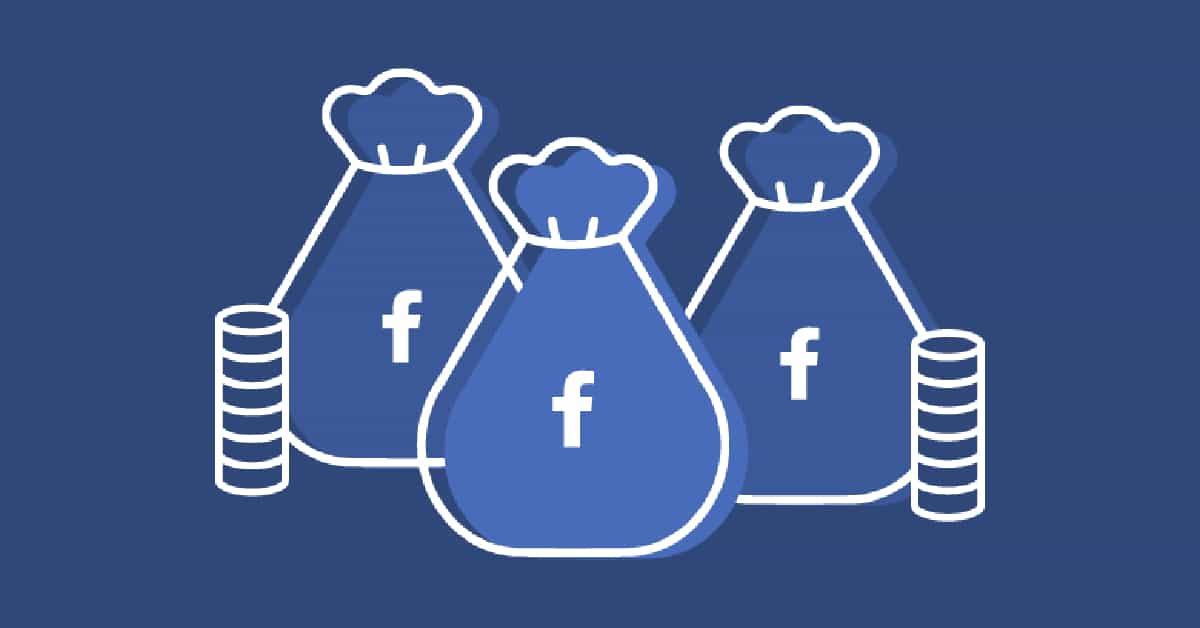Facebook has become an indispensable platform for businesses to reach their target audience. However, as the popularity of Facebook advertising continues to rise, so does the competition, and consequently, the cost of running ads on the platform. As an advertiser, it’s crucial to optimize your Facebook ad costs to maximize your return on investment (ROI). In this article, we will explore some simple yet effective ways to lower the cost of your Facebook ads and achieve better results without breaking the bank.
Understanding the Factors Affecting Facebook Ads Costs

To effectively lower your Facebook ad costs, it’s essential to understand the key factors that influence them. By optimizing these factors, you can improve the cost-efficiency of your campaigns. Let’s take a closer look at each factor:
Relevance Score and Quality Ranking
Facebook’s relevance score is a metric that reflects how relevant and engaging your ads are to your target audience. A higher relevance score leads to lower costs. To improve your relevance score:
- Craft compelling ad copy and visuals that resonate with your target audience.
- Test different variations of your ads to find the most effective ones.
- Monitor and optimize your ads based on their performance metrics.
Ad Bid and Budget
Your ad bid and budget directly impact the cost of running Facebook ads. Consider the following tips to optimize your bidding and budgeting strategy:
- Set your bids based on your campaign objectives and the value you place on specific actions (e.g., conversions, link clicks).
- Monitor your campaign’s performance and adjust your bids accordingly to stay competitive.
- Experiment with different budget allocation strategies (e.g., daily or lifetime budgets) to find the most cost-effective approach.
Facebook Ads Audience Targeting
Refining your audience targeting can significantly impact your ad costs. Here’s how to optimize your audience targeting:
- Clearly define your target audience based on demographics, interests, and behaviors.
- Utilize Facebook’s audience insights to gain a deeper understanding of your target audience and adjust your targeting accordingly.
- Test different audience segments to identify the ones that generate the best results at the lowest cost.
Ad Placement
Where your ads appear on Facebook can affect their costs. Consider these strategies to optimize ad placement:
- Experiment with different ad placements, such as the Facebook News Feed, right column, or audience network, to find the most cost-effective options.
- Use Facebook’s automatic placements feature to let the platform optimize ad delivery across different placements based on performance data.
Ad Format and Creative
The format and creative elements of your ads play a crucial role in capturing users’ attention and driving engagement. To optimize your ad format and creative:
- Create visually appealing ads with high-quality images or videos.
- Craft compelling ad copy that communicates your value proposition.
- A/B tests different ad formats and creative elements to identify the most effective combinations.
Tips for Optimizing Your Facebook Ad Costs

Optimizing Relevance Score and Quality Ranking
Craft Compelling Ad Copy and Visuals:
- Write ad copy that speaks directly to your target audience’s pain points and desires.
- Use attention-grabbing headlines and persuasive language.
- Include high-quality images or videos that are relevant to your ad message.
Test Different Ad Variations:
- Create multiple versions of your ads with different headlines, images, and calls to action.
- Run A/B tests to determine which variations perform best and generate the highest relevance scores.
Monitor and Optimize Ad Performance:
- Regularly review the performance metrics of your ads, such as click-through rates (CTR) and conversion rates.
- Pause or modify underperforming ads to improve your overall relevance score.
Optimizing Ad Bid and Budget
Set Bids Based on Campaign Objectives:
- Determine the specific actions you want users to take (e.g., conversions, link clicks).
- Set your bids accordingly to ensure you’re optimizing for the most valuable actions.
Monitor Campaign Performance:
- Keep a close eye on your campaign’s performance metrics, such as cost per result and return on ad spend (ROAS).
- Adjust your bids based on the performance data to maximize your ROI.
Experiment with Budget Allocation Strategies:
- Test different budget allocation methods, such as daily budgets or lifetime budgets.
- Monitor the performance of each budget allocation strategy to identify the most cost-effective approach.
Optimizing Audience Targeting
Define Your Target Audience:
- Identify the demographics, interests, and behaviors of your ideal audience.
- Use Facebook’s audience insights to gain valuable information about your target audience.
Refine Your Targeting:
- Based on the insights gained, adjust your targeting parameters to reach a more specific and relevant audience.
- Test different audience segments to identify the ones that generate the best results at the lowest cost.
Leverage Custom Audiences and Lookalike Audiences:
- Utilize custom audiences to target users who have already engaged with your brand.
- Create lookalike audiences based on your existing customer base to expand your reach to similar users who are likely to be interested in your offerings.
Optimizing Ad Placement
Experiment with Different Placements:
- Test various ad placements, such as the Facebook News Feed, right column, or audience network.
- Monitor the performance of each placement to identify the most cost-effective options for your campaigns.
Utilize Automatic Placements:
- Use Facebook’s automatic placements feature to let the platform optimize your ad delivery across different placements based on performance data.
- This ensures your ads are shown where they are most likely to generate the best results at the lowest cost.
Optimizing Ad Format and Creative
Create Visually Appealing Ads:
- Use high-quality images or videos that capture users’ attention and convey your message effectively.
- Consider using eye-catching colors, fonts, and visuals that align with your brand identity.
Craft Compelling Ad Copy:
- Write concise and persuasive ad copy that communicates your value proposition.
- Use a strong call to action (CTA) to prompt users to take the desired action.
A/B Test Different Ad Formats and Creative Elements:
- Experiment with different ad formats, such as carousel ads, video ads, or canvas ads.
- Test variations in ad headlines, descriptions, and visuals to identify the combinations that perform best and generate the lowest costs.
By implementing these tips and continuously optimizing your Facebook ad campaigns, you can effectively lower the cost of your Facebook ads while achieving better results. Remember to monitor your campaigns closely, analyze performance metrics, and make data-driven decisions to continually refine your strategy.
FAQs
Yes, it is possible to lower the cost of Facebook ads without sacrificing results. By implementing optimization strategies, you can improve the cost-efficiency of your campaigns while still achieving your desired outcomes. Some of the key strategies include refining your audience targeting, optimizing ad creative and relevance, and monitoring and adjusting your ad bids and budgets based on performance data.
The ideal timeframe for making changes to your ad campaigns depends on various factors, including the size of your audience, the duration of your campaigns, and the frequency of ad delivery. However, it’s generally recommended to allow sufficient time for your campaigns to accumulate enough data before making significant changes. This could be anywhere from a few days to a couple of weeks, depending on the campaign objectives and budget. Regular monitoring of key performance metrics can help you identify trends and make informed adjustments to optimize your campaigns.
The best bidding strategy to lower costs depends on your campaign objectives and budget. However, utilizing a cost-effective bidding strategy such as “Lowest Cost” or “Target Cost” can be effective in reducing Facebook ad costs. These strategies allow Facebook’s algorithm to automatically optimize your bids to deliver the desired results while striving to achieve the lowest possible cost per result. Experimenting with different bidding strategies and closely monitoring their impact on cost and performance can help you determine the most effective approach for your specific campaigns.
To reduce ad costs, it’s important to strike a balance between reach and engagement. While both reach and engagement are valuable metrics, prioritizing engagement can be more cost-effective. Higher engagement rates, such as likes, comments, and shares, can improve your ad’s relevance score, which in turn can lead to lower costs. By creating compelling ad content and targeting the right audience, you can increase the likelihood of generating engagement, thereby reducing your overall ad costs.
To optimize your Facebook ad targeting and reach the right audience, consider the following strategies:
- Clearly define your target audience based on demographics, interests, and behaviors relevant to your product or service.
- Utilize Facebook’s audience insights to gain valuable information about your target audience and identify additional targeting opportunities.
- Test different audience segments to identify the ones that generate the best results at the lowest cost.
- Utilize custom audiences to target users who have already engaged with your brand, and create lookalike audiences based on your existing customer base to expand your reach to similar users.
The cost of Facebook ads can vary across industries and niches. While it’s challenging to generalize, some industries and niches may experience relatively lower costs due to factors such as lower competition or higher engagement rates. However, it’s important to note that the cost of Facebook ads is influenced by various factors, including audience targeting, ad relevance, and bid competition. Conducting industry-specific research and closely monitoring ad performance within your specific niche can provide insights into the typical cost ranges and help you optimize your campaigns accordingly.
Improving your ad relevance score is crucial for lowering ad costs. To enhance your ad relevance score, consider the following strategies:
- Craft compelling ad copy and visuals that resonate with your target audience.
- Test different variations of your ads to identify the most effective combinations.
- Monitor the performance of your ads and optimize them based on key metrics such as click-through rates (CTR) and conversion rates.
- Refine your audience targeting to ensure your ads are reaching the most relevant users.
- Align your ad content with the specific objectives of your campaigns and deliver a clear value proposition.
Yes, it is possible to lower Facebook ad costs over time. As you gain insights from your campaigns, refine your targeting, and optimize your ad content, you can improve the cost-efficiency of your ads. By monitoring and adjusting key factors such as ad relevance, audience targeting, and bidding strategies, you can identify opportunities for cost reduction and optimize your campaigns accordingly. However, it’s important to note that Facebook’s ad costs can be influenced by external factors such as market competition and demand, so ongoing monitoring and optimization are necessary to maintain cost-efficiency.
When trying to lower Facebook ad costs, it’s important to avoid common mistakes that can hinder your efforts. Some key mistakes to avoid include:
Poor audience targeting: Failing to define and refine your target audience can result in wasted ad spend and higher costs. Be specific and tailor your targeting parameters to reach the most relevant users.
Neglecting ad relevance: Irrelevant ad content can lead to higher costs and lower engagement. Ensure your ads align with the interests and needs of your target audience.
Not monitoring and optimizing performance: Regularly monitor key performance metrics such as CTR, conversion rates, and relevance scores. Failing to optimize underperforming ads can prevent cost reduction.
Ignoring split testing: A/B testing different ad variations allows you to identify the most effective combinations and optimize your ads for better performance and lower costs.
Inconsistent monitoring and adjustments: Set up a regular schedule for monitoring your campaigns and making adjustments based on performance data. Consistency is key to achieving cost-efficiency.
Seasonal trends and strategies can indeed help reduce Facebook ad costs. Some key approaches include:
Take advantage of off-peak seasons: During less competitive periods, ad costs may be lower. Adjust your campaigns to target these periods and optimize your ad spend.
Tailor ads to seasonal events and holidays: Create ad campaigns that align with seasonal events and holidays relevant to your target audience. Utilize messaging and visuals that resonate with the specific season, driving engagement and potentially reducing costs.
Implement retargeting campaigns: Retargeting campaigns can be cost-effective, as they focus on reaching users who have already shown interest in your brand. Utilize custom audiences and retargeting ads to drive conversions at a lower cost.
Leverage user-generated content: Encourage your audience to create and share content related to your brand or products. User-generated content can help lower ad costs by providing social proof and increasing engagement organically.
Optimize budget allocation: During seasonal peaks, adjust your budget allocation to ensure you are targeting the most valuable audiences and maximizing your return on ad spend.
Related Articles
- How To Choose The Right Digital Marketing Strategy For Your Business
- What Is OTT Advertising, And Why Is It A Trend?
- Display Vs. Native Advertising: What’s The Difference?
- 9 Compelling Resons You Should Be Advertising Online
- 7 Types Of Ad Fraud And How To Prevent Ad Fraud?
- 8 Ways To Improve Online Marketing Strategy For Business Growth
- The Art Of Crafting Irresistible Marketing Ads
 Latifa has a passion for email marketing and building meaningful customer relationships. She enjoys creating personalized email campaigns that resonate with audiences and drive results. Latifa's friendly demeanor and innovative approach to customer engagement make her a delightful and effective team member.
Latifa has a passion for email marketing and building meaningful customer relationships. She enjoys creating personalized email campaigns that resonate with audiences and drive results. Latifa's friendly demeanor and innovative approach to customer engagement make her a delightful and effective team member.












